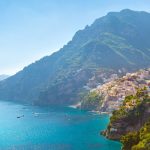
What to see in the Aeolian Islands? The beaches, of course, but also its nature, history and the charm of being in the heart of the Mediterranean and yet “unworldly”.
It is one of Italy’s many UNESCO World Heritage Sites, among the ideal destinations for a vacation between late August and early September: these are the Aeolian Islands, seven islands, all of volcanic origin, off the northeastern tip of Sicily and shaped like a wide, flattened Y.
Just as many people are returning to work and tourist destinations become less crowded, you can take the opportunity to make the most of a lovely view, a sunset stroll and, why not, a traveling vacation that touches all the islands.

According to legend, the Aeolian Islands are the daughters of the Greek wind god Aeolus; they form an archipelago where choosing the most beautiful is really difficult. The solution? Visit them all and discover what there is to see and do in each of them!
Aeolian Islands, a UNESCO heritage site since 2000
What to see in the Aeolian Islands? For starters, some of the things that have earned it its inclusion on the UNESCO World Heritage List: from the characteristics of the volcanic soil, the subject of study by the largest volcanology institutes, to the 900 species of plants, including native vines. Each of the islands, however, enshrines particular and unique wonders that make it really hard to prefer one over the others.
Vulcano, Lipari and Salina: the “three elder sisters”
They are the largest and the three central islands of the archipelago, the “base” of the Y, and they hold attractions for all tastes. At Vulcano, you can try your hand at walking on the inactive Fossa Crater, treading your way through the lava and sulfurous terrain, then enjoying the relaxation of the thermal muds.
Lipari, on the other hand, is the historical-cultural center of the entire archipelago, home to the “Luigi Bernabò Brea” Archaeological Museum, which chronicles the island and its sisters in a genuinely evocative setting: how many other museums stand on a natural rocky fortress overlooking the sea, the “Castle” of Lipari?

Salina, the exact center of the Aeolian archipelago, is called the green pearl: for its lush vegetation, crystal clear sea, and two excellences such as the Malvasia vineyard and the Nocella and Spinoso capers, typical of the area. And perhaps also for the literary suggestions, from “The Leopard” to “The Postman”, scenes of which were filmed right here. Good reasons to visit the island of Salina, don’t you think?
Filicudi and Alicudi: the western pair
On Filicudi, among the wildest islands in the archipelago and the oldest, the prehistoric village of Zucco Grande, uninhabited for a hundred years and overwhelmed by the natural vegetation that has enveloped it, is well worth a visit.
The charm of Alicudi, on the other hand, derives from its harshness and bare character; inhabited only in its eastern part, you won’t find clubs or nightlife there. Just the smell of the sea and the sounds of nature.
Panarea and Stromboli: the impetuous sisters
Despite being the smallest of the Aeolian islands, Panarea has a very rich and diverse flora compared to the others, making it almost entirely a Nature Reserve.

On Stromboli, an active volcano island, you can’t help but admire the contrast between the very black beaches (among the most beautiful beaches in all the Aeolian Islands) and the white houses typical of Aeolian and Mediterranean architecture in general. And in the background, when the sky is clear, you can see the Strait of Messina – but there’s more! Along the main street, Via Vittorio Emanuele, you can see the house where Ingrid Bergman and Roberto Rossellini lived during the filming of the movie Stromboli Land of God.

Aeolian Islands: how to get there with Italo
Are you wondering if you can reach the Aeolian Islands with Italo? Yes, you can thanks to Italo’s trains to Naples and ferry partner SNAV, with departures from Naples! How about extending your vacation by visiting the capital of Campania or the surrounding sights, including another UNESCO heritage site, the Reggia di Caserta?








